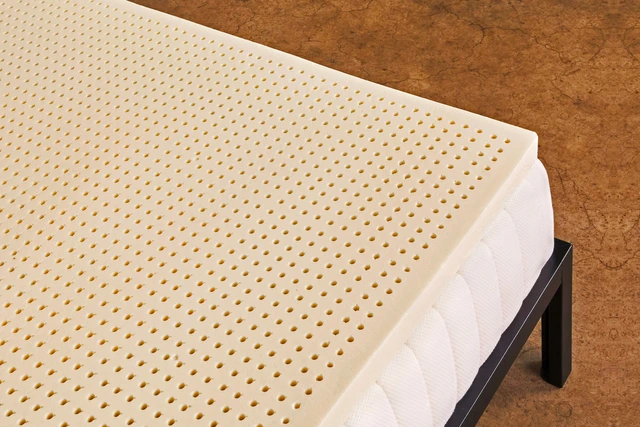Organic latex is a natural material derived from the sap of rubber trees (Hevea brasiliensis). It is highly prized in the mattress and bedding industry for its exceptional comfort and eco-friendly properties. Unlike synthetic latex, which is derived from petrochemicals, organic latex is sourced sustainably from rubber tree plantations. These plantations follow strict organic farming practices, ensuring minimal environmental impact and promoting biodiversity.
Types of Organic Latex
Organic latex can be categorized into two types: Dunlop latex and Talalay latex.
Dunlop Latex
Dunlop latex is the older and more traditional manufacturing process. It involves whipping the latex sap into a froth, pouring it into molds, and then baking it. This process results in a denser and slightly firmer latex foam, making it ideal for providing support in mattresses and pillows.
Talalay Latex
Talalay latex, on the other hand, is a newer and more complex process. It begins with the same latex sap, but it is whipped into a froth and partially vacuum-sealed before it is poured into molds. The molds are then frozen and heated to ensure the latex is distributed evenly. The result is a softer, more consistent latex foam that is often used in comfort layers of mattresses and mattress toppers.
Benefits of Organic Latex
Organic latex offers numerous benefits that make it a popular choice among environmentally conscious consumers and those seeking a comfortable, supportive sleep surface.
Comfort and Support
One of the primary advantages of organic latex is its exceptional comfort and support. Latex foam conforms to the body’s contours, providing pressure relief and spinal alignment. Whether used as a mattress core or comfort layer, organic latex ensures a restful and rejuvenating sleep experience.
Durability
Organic latex mattresses and bedding products are known for their durability. They can maintain their shape and resilience for many years without sagging or forming body impressions, unlike traditional spring mattresses or synthetic foam products.
Natural Materials
Since organic latex is derived from natural rubber tree sap, it is free from synthetic chemicals and harmful additives commonly found in conventional mattresses. This makes it an excellent choice for individuals with allergies or sensitivities to chemicals.
Eco-Friendly Production
The production of organic latex promotes sustainable and eco-friendly practices. Rubber tree plantations help reduce carbon dioxide levels in the atmosphere, contributing positively to the environment. Organic farming methods also minimize the use of pesticides and fertilizers, further reducing ecological impact.
Considerations When Buying Organic Latex Products
While organic latex offers numerous benefits, there are a few considerations to keep in mind when purchasing latex products.
Price
Organic latex mattresses and bedding products can be more expensive than their synthetic counterparts. However, many consumers find the long-term durability and comfort benefits outweigh the initial cost.
Firmness Options
Organic latex mattresses come in various firmness levels, from soft to extra firm. Understanding your comfort preferences and sleep position can help you choose the right firmness level for optimal support and comfort.
Certifications
Look for certifications such as Global Organic Latex Standard (GOLS) or OEKO-TEX Standard 100 to ensure that the latex used in the product meets stringent quality and environmental standards.
Conclusion
Organic latex is a natural, sustainable, and comfortable choice for mattresses and bedding products. Its unique properties, including comfort, support, and eco-friendliness, make it a preferred option for environmentally conscious consumers seeking a restful night’s sleep. By choosing organic latex, you not only invest in your sleep quality but also contribute to a healthier planet through sustainable practices.




